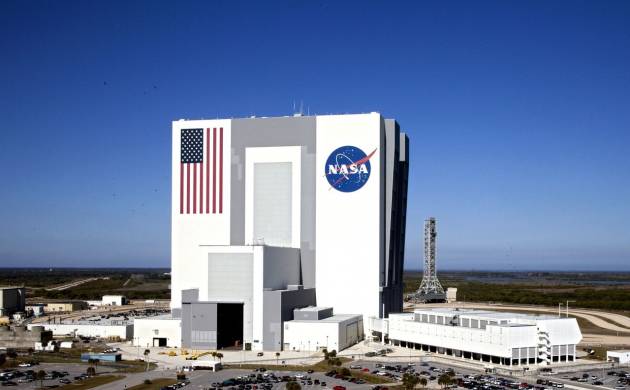Something extraordinary has happened at NASA. The engines of NASA’s upcoming powerful rocket have performed their most powerful test firing yet. The name of the new rocket of NASA is the Space Launch System and it is currently under development. Once, fully developed and operational, the SLS rocket will carry humans and cargo to the moon, Mars and even beyond.
Last year, the US President Donald Trump had formally directed NASA to return Americans to Moon again. He also said NASA to pan Missions that would take astronauts to Mars and beyond. Hence, this SLS mission is seen as NASA’s response to Trump’s direction of landing humans on Moon again. The engine test of SLS took place on February 21 at Stennis Space Center in southern Mississippi. NASA said in a statement that the RS-25 engines of SLS reached their highest power level ever achieved during the test firing. For the test, the engine operators revved up the RS-25 engines to 113-percent thrust level for 260 seconds.
RS-25 engines were developed by NASA almost 40 years for space shuttle programs and at that time they were capable of achieving 100-percent thrust. But NASA modified or upgraded these RS-25 engines for the SLS mission and that is why they achieved more than 100 percent thrust. The NASA officials said that the increased engine performance is very important for enabling SLS missions to deep space as the rocket evolves to be larger and carry astronauts and heavy cargo on a single flight. NASA targets to fit four RS-25 engines to the SLS rocket which will generate around 2 million lbs of thrust. Also, if a pair of strap boosters is fitted to the SLS then the rocket can produce a whopping 8 million lbs. of total thrust.
NASA has planned to keep the rocket flexible and ready for different destinations and missions. The rockets initial configuration will allow it carry around 26 metric tons (57,320 lbs.) of weight to the low-earth orbit and on to the Moon. The final configuration of SLS will allow it to carry at least 45 metric tons (99,208 lbs.) to space. Along with the RS-25 engine tests, the operators also tested new flight controller and a shock absorbing component of the SLS rocket on February 21.
